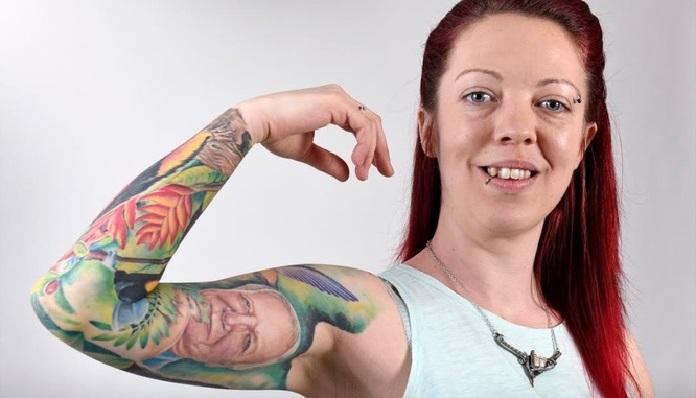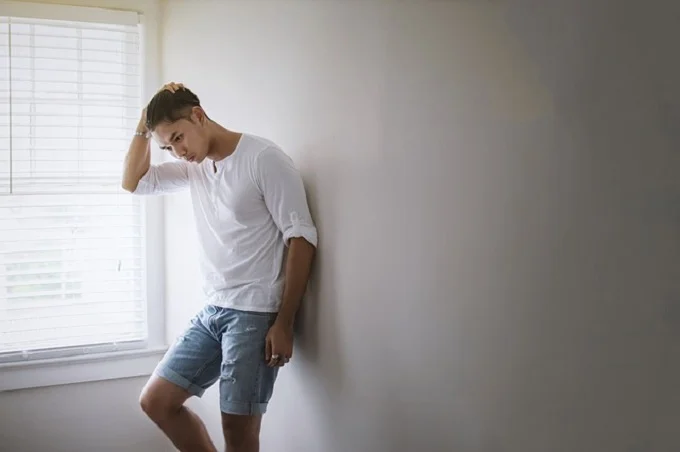What to do if the tattoo does not heal for a long time

The duration of healing depends not only on the individual characteristics of the body but also on the technique in which the tattoo is performed, the size of the pattern, its location, and even the chemical composition of the pigment.
Contour tattoos heal faster than blackwork (full fill) since the wound surface area is much smaller.
Therefore, if the tattoo does not heal for a month or more, do not sound the alarm. Healing problems are indicated not by the timing but by other factors – severe swelling, suppuration, severe pain. When it comes to healing, there are three stages:
Inflammatory
It lasts from 3 days to a week, depending on the size and technique of the tattoo. It is characterized by redness, discharge of ichor, and pulling pain, which depends on the location of the tattoo.
Inflammation is not a pathology but a protective reaction of the body to damage the skin. The blood flow at the wound site slows down, and the walls of the capillaries narrow, which explains the redness.
During this phase, the body strenuously eliminates dead and damaged cells by absorbing them into leukocytes. It is not necessary to delve into chemistry and biology, it is enough to know that the ichor is excreted within 1-2 days after the procedure, which is normal.
But incessant bleeding is already an alarming signal. If blood (specifically blood, not pinkish ichor) is released 24 hours after the procedure, you should consult a doctor.
Granulation
It lasts from 7 days to several weeks, depending on the characteristics of the tattoo. During this time, granulation tissue is formed at the wound site, consisting of young, actively dividing cells. During the granulation period, discomfort is possible: tingling, slight burning sensation.
This is also a normal process, indicating cell division. Granulation tissue is much thinner than the epithelium (the upper layer of the skin). It is easy to damage it; therefore, it is not recommended to scratch an unhealed tattoo or rub against clothing actively.
Epithelial
At this stage, all recovery processes are already hidden from view. Granulation tissue gradually develops into epithelial tissue, building up new layers of cells.
This period can last for months, but for the tattoo owner, the inconvenience ends with the beginning of the epithelial phase.

Why a tattoo may not heal for a long time
In most cases, all problems are associated with non-adherence to recommendations during the inflammatory healing phase. Tattoo owners do not change protective compresses on time or ignore them altogether, do not wash the wound, or apply drugs on it that are not needed there at all. Because of this, the inflammatory phase can go not into granulation, as it should be, but into purulent.
If the tattoo starts to decay, you can forget about the clarity of the drawing, and this is not the only problem. It should be understood that while the wound is in the inflammatory phase, it is not protected by anything and is an open gateway for microbes.
You cannot write off such a problem as the lack of professionalism of the tattoo master. He can inject the pigment deeper than necessary, use low-quality needles and dyes, and not follow the tattoo technique. This manifests itself in the first days of the procedure with severe pain and profuse bleeding. There is only one way to protect yourself from non-professionals – to be hammered by trusted tattoo masters who work officially and have a good reputation.
The healing process can be delayed for other reasons:
- Physical activity in the first days after the procedure. Before the formation of granulation tissue, it is better to skip training altogether.
- Taking medications that affect the blood flow rate.
- Drinking alcohol during the inflammatory phase. The penetration of ethanol into the blood increases the blood supply in the skin.
- A visit to a bath or sauna. Excessive sweating can lead to blurring of the contours of the pattern because the pigment has not yet been fixed in the skin. After healing, moisture and high temperatures do not affect the tattoo in any way.
Another part of the reason that the tattoo does not heal is its owner’s restless hands. During the granulation phase, the skin forms a thin crust at the pigment injection site. Some amuse themselves by ripping it off, finding particular pleasure in it. In this case, the healing process can take months.

How to care for a tattoo, so it heals faster
All advice can be reduced to one thing: follow the recommendations of the professional. Different types of tattoos have their healing nuances, and a professional knows about them. And if you are in doubt about something, do not hesitate to call the tattoo master and ask questions. You may even have to come for an inspection to dispel or confirm suspicions. A real pro will never refuse a client a post-procedural consultation.




